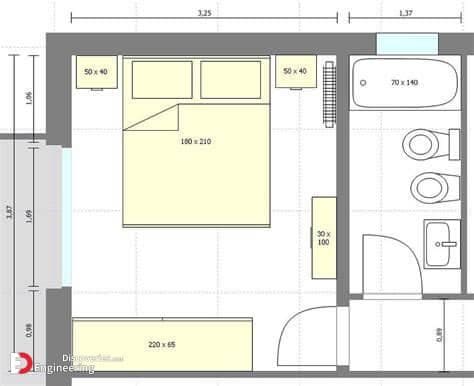A lawn is more than just a patch of green, it’s a valued extension of your home, perfect for gatherings, relaxation, and enhancing curb appeal. But choosing the best lawn type goes beyond aesthetics. To enjoy a healthy, low-maintenance, and productive lawn, you must consider how you plan to use the space, your local climate, soil characteristics, and whether you prefer quick results or a budget-friendly approach. Understanding these key factors will help you select the ideal grass variety for your unique site, ensuring a vibrant and resilient lawn year-round
1. Awareness of the Intended Use
Analogous to how you can’t buy a sports car to accommodate a joint family car ride, merely choosing what you like can’t always suffice for what your intended use is. Every garden is developed distinctly. Whether you want to use it as a play space for your kids and pet or maintain it as strictly ornamental shall largely filter out the suitable grass categories.
2. Familiarity with Contextual Climate
Before choosing a lawn, being informed of water and sunlight availability are critical. You need to ensure that your plant species selection thrives in microclimatic conditions. There is a varying range of shade-tolerant or intolerant, drought-resistant or water-intensive, and warm-season or cool-season turfs.
Knowing what your local climate favors can help you plan your lawn better.
3. Identification of the Soil Type
There’s a reason why plant growth is specific to soil type. Plants have a checklist of mineral availability, moisture content, and pH levels. Usually, a 5.5-6.5 pH value and well-drained, moist conditions are a suitable abode for good growth. Variations to these pH levels or an unfertile composition of too much sand shall require some additional care through manures and composts.
4. Want It Quicker or Cheaper
Want to have a grass seed or would prefer a sod installation? Wondering what the difference?
Practically, it’s an imperative decision when concerns of quick results or budget restrictions are considered. Grass seeds might be an efficient and pocket-friendly choice for large areas when quick results aren’t the criterion. While turf might be a wiser and slightly expensive choice if immediate effect is desired.
Picking Your Favorite Green!
Now that you are informed on the prerequisites, let us share with you the top 5 popular lawn choices:
1. Tall Fescue
This light green-yellow hue shade of grass is one such sod lawn that doesn’t demand frequent mowing or active nourishing. It will stay green even in winter, unlike other warm-season turfs. This bunch-type grass variety is also disease-resistant.
Prime Feature: Heat and drought tolerance.
2. Bermuda Turf
A darker shade of green, this warm-season grass is a short and flat-bladed variety. You can get one of the most vibrant lawns with this variety with relatively easy maintenance. Being a turf, it will quickly grow and form a dense covering.
Developed with meticulous research, Tiftuf Bermuda turf is a variant of the same that is popular for its drought tolerance and all-season color density. It’s a high-quality turf that we would highly recommend for you to explore.
Prime Feature: Suitable choice for heavy foot traffic.
3. Couch Blends
If your search is for fast growth and quick coverage while being economical, then couch grass might be your ideal choice. In couch blends, a mix of diverse grass varieties is used to formulate a sturdy ground that resists heavy foot traffic. These attributes make them an excellent choice for parks or sports grounds.
Prime Feature: Adaptability to a wide range of soil types
4. Sir Walter Buffalo Turf
Sir Walter Buffalo is a lime green hue, a low-maintenance lawn that is climate tolerant and water efficient. Available as laying rolls, it’s extremely resilient and self-healing. It is adaptable to neutral and mildly acidic soil conditions. Overall, it’s a non-invasive variety and a great all-around performer.
Prime Feature: One of the best options to opt for shade-tolerant yards.
5. Kikuyu
Best grown in fertile and moderately drained soil types, it’s one variant with a gorgeous texture. However, it’s slightly high on maintenance given its abrasive nature. Being hardy makes it sturdy enough to be used as a playscape for children or pets.
Prime Feature: Grows at an incredibly fast pace.
How About Having a Little of Everything?
Creating a mixed lawn variety is not at all a bad idea. If you can get the combinations right, it could produce for a better and more resilient lawn. This happens due to each variant filling up for the requirements of specific site conditions. Seed blends are also better suited to adapt to environmental changes in the long run. The only thing you need to ensure is to know what attributes you desire from your lawn and suitable varieties that could blend to formulate your dream lawn.
Quick Variety Guide.
If you are looking for warm-season turf, consider varieties like:
Bermuda,
Tiftuf Bermuda turf
Kikuyu
Zoysias
If you are searching for cool-season turfs, explore options like:
Tall fescues
Dwarf tall fescues
Lawn Laying- Note of the Essence
Having a lawn is a great idea. But smart choices made in the process of having it can help create an effective, easy-to-maintain, and long-lasting lawn. Identify your needs, budget, and study your climate and soil conditions. Cumulative of this shall govern what your ideal choice should be.
Now that you know, up for laying your lawn?
Discover More
Top 10 Benefits of Artificial Grass Installation
10 Types of Grass Perfect for Your Lawn
7 Pro Tips To Take Care Of Your Lawn In Summer
The post Top Lawn Types for Every Home: Choose the Best Grass for Your Yard appeared first on Architectures Ideas.



